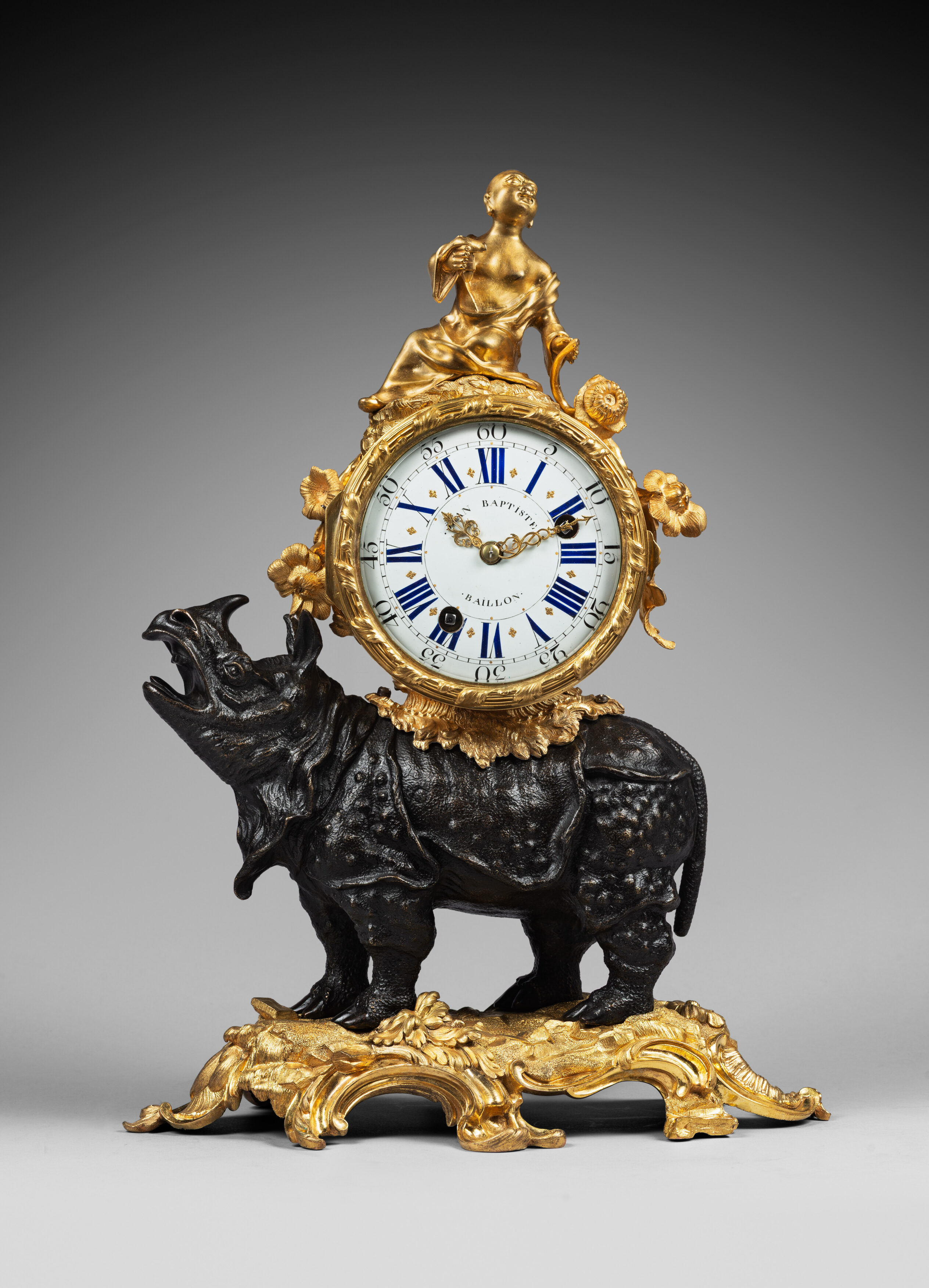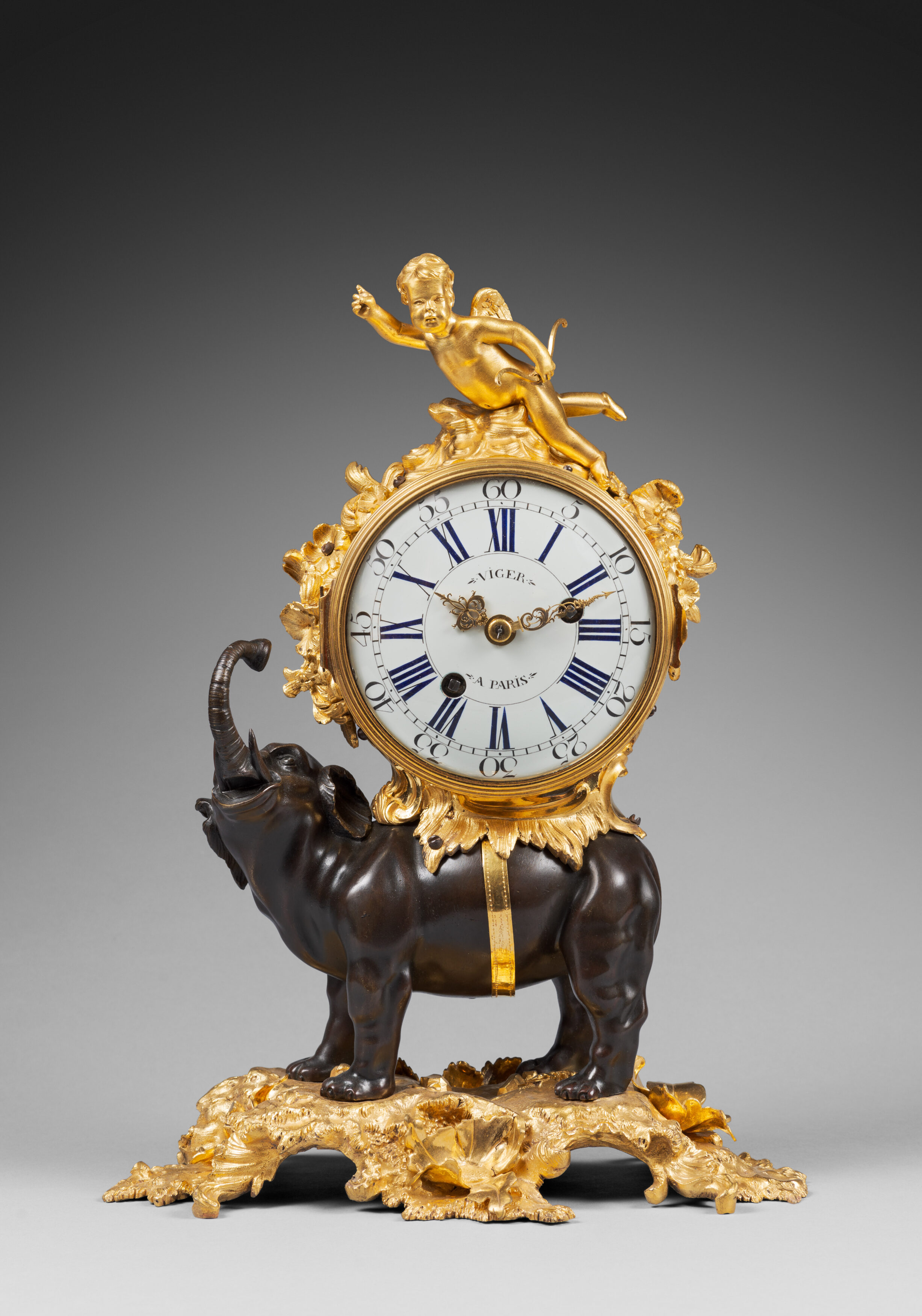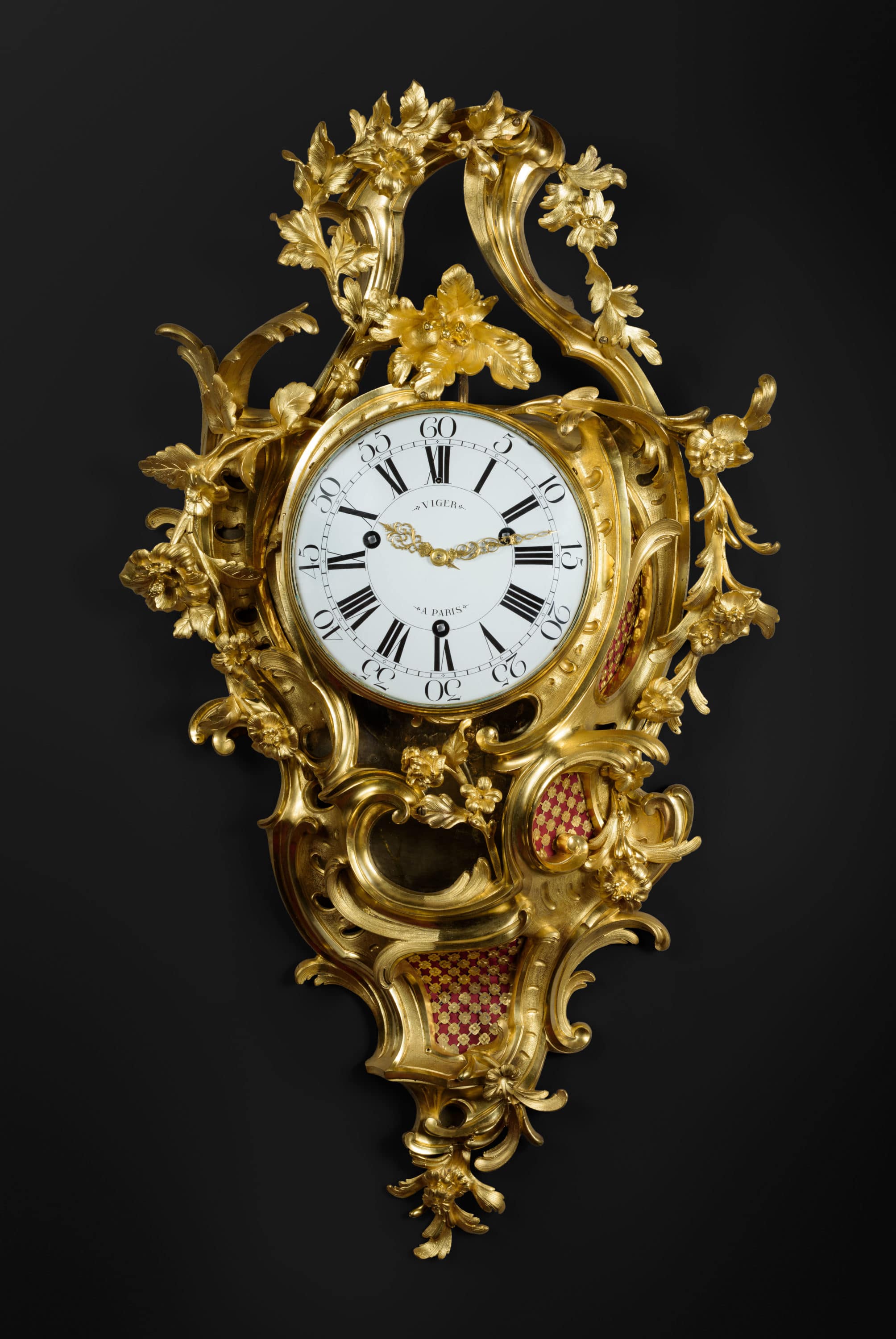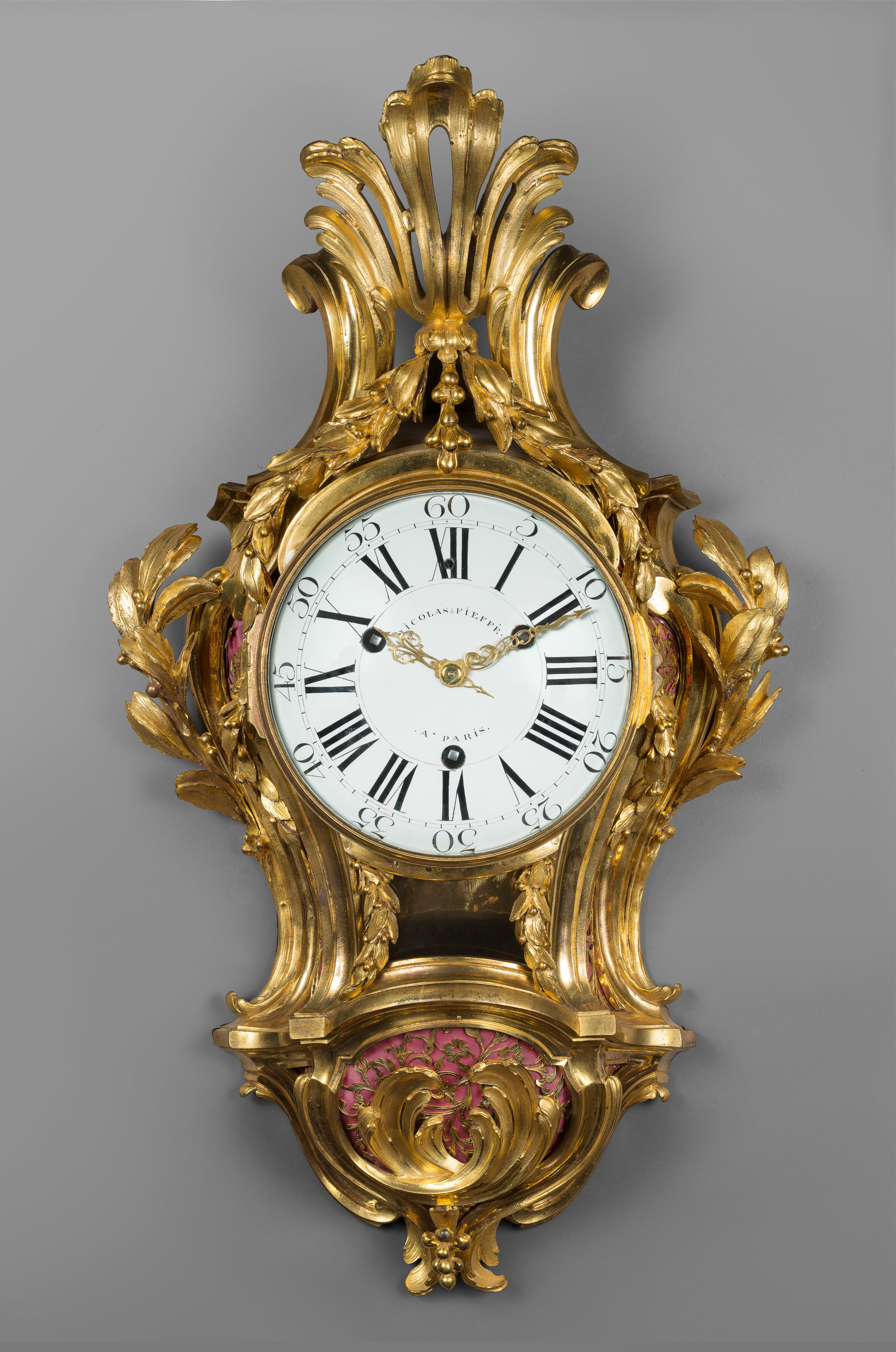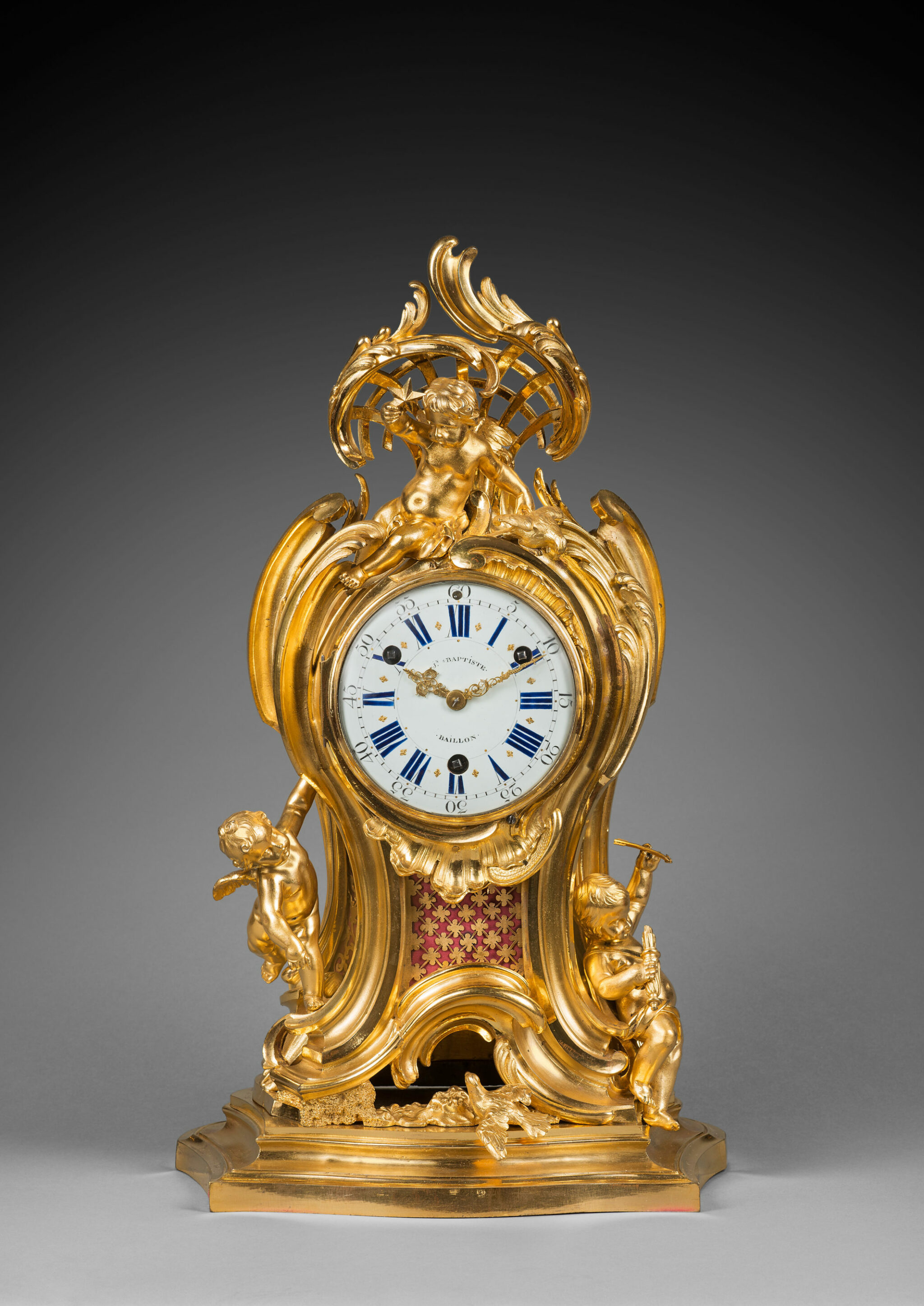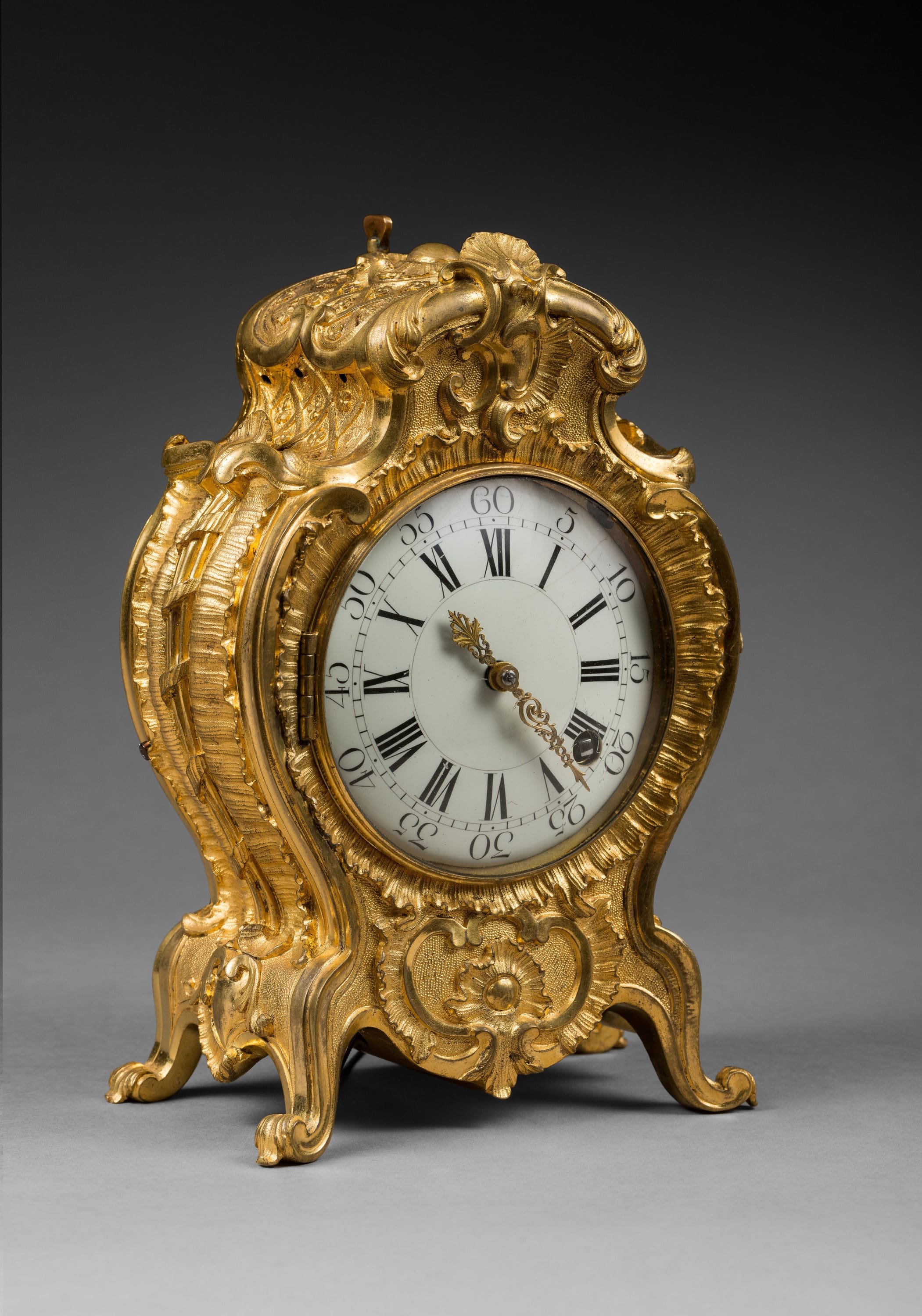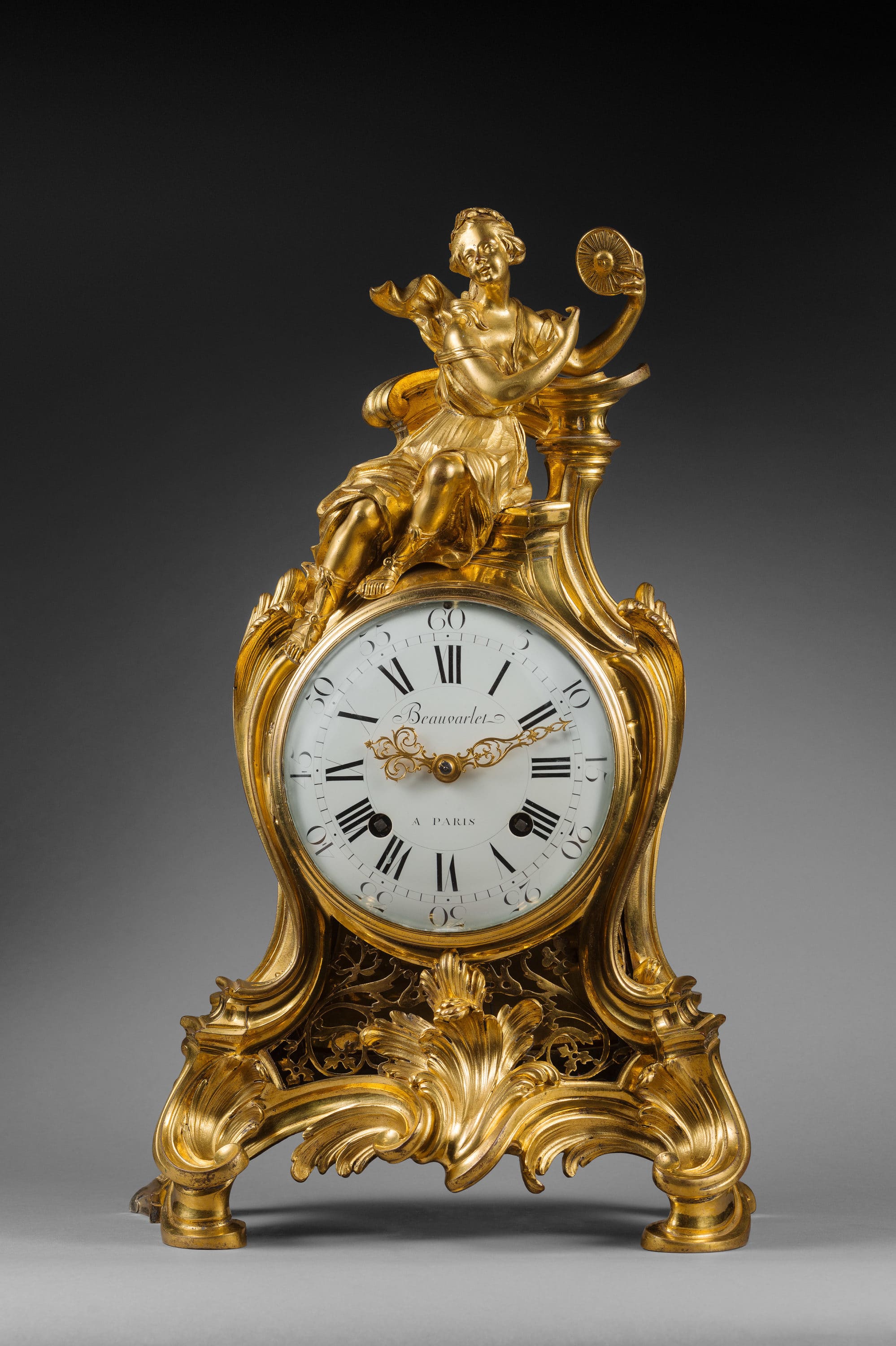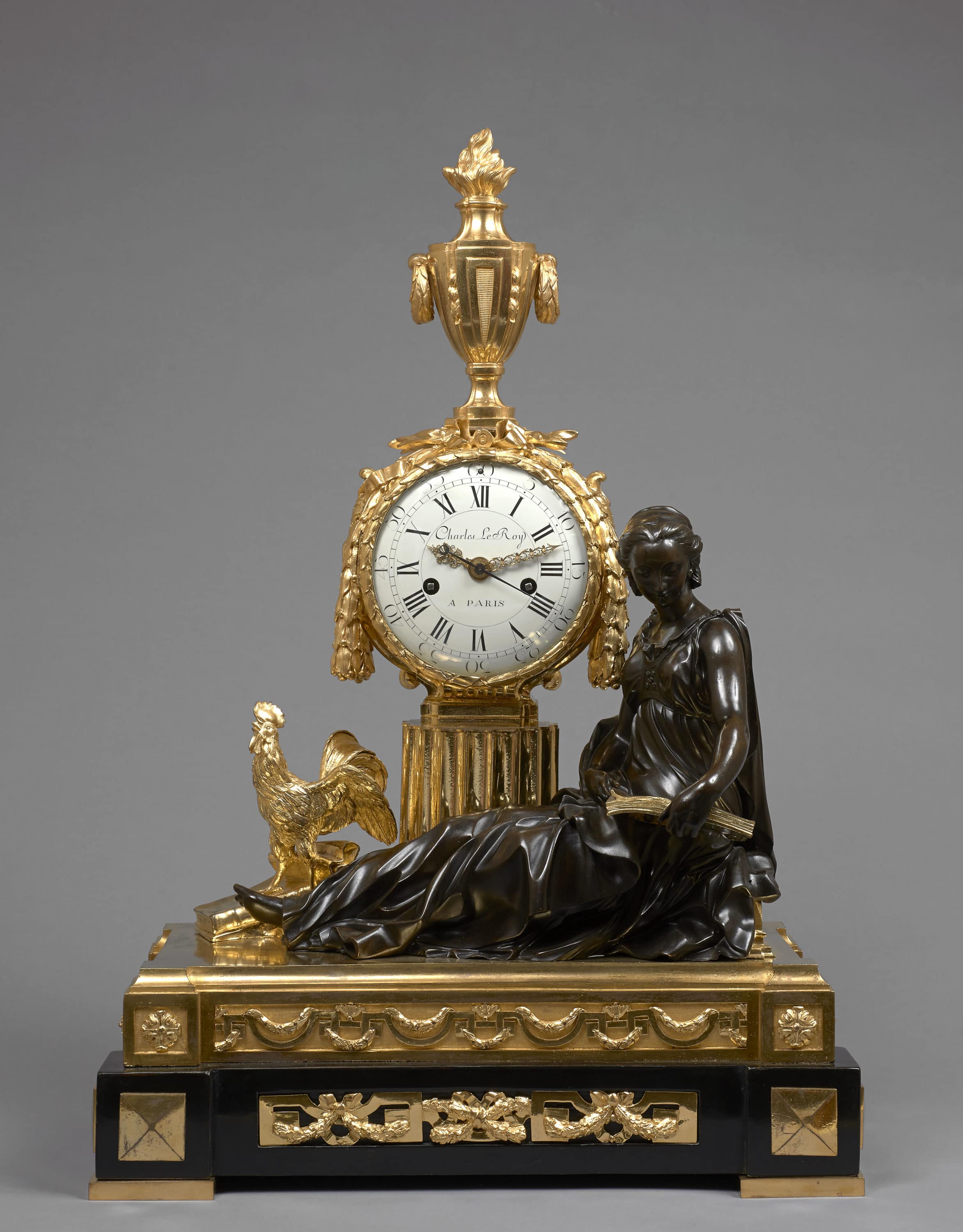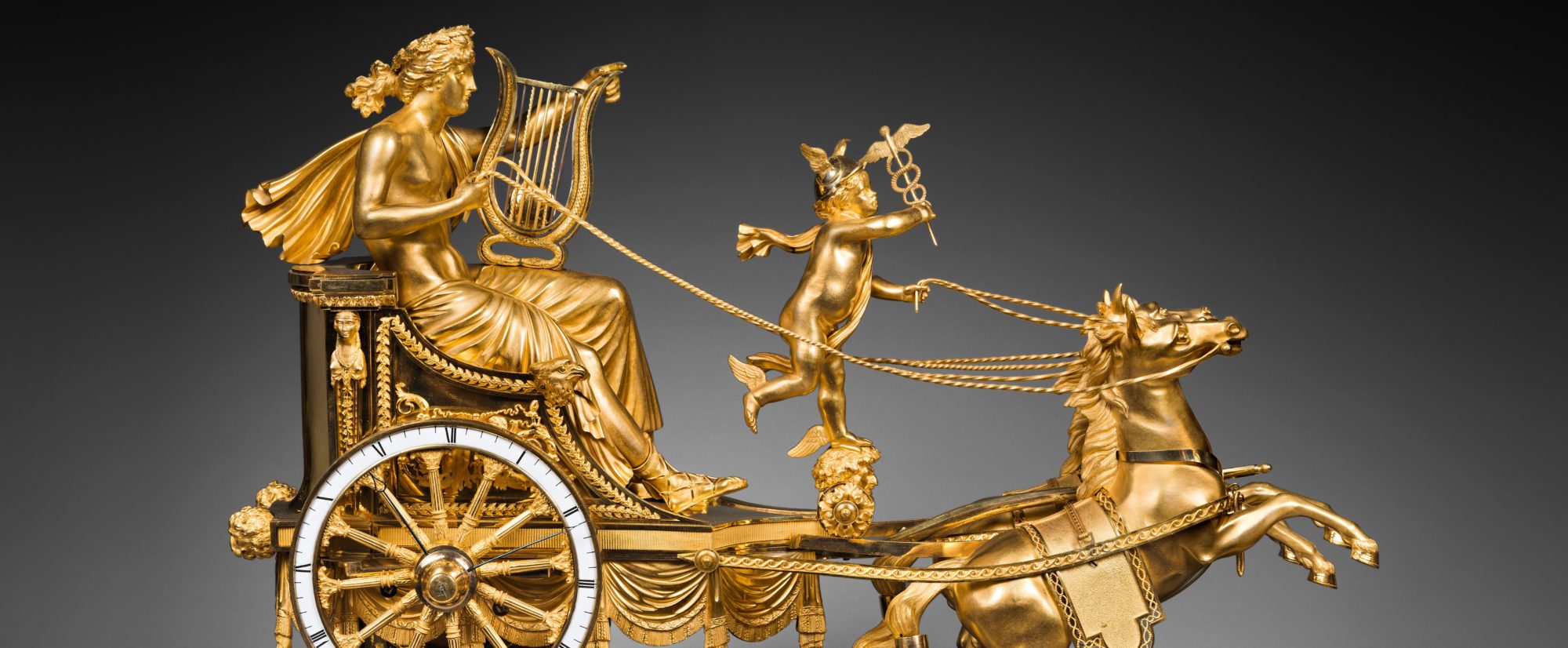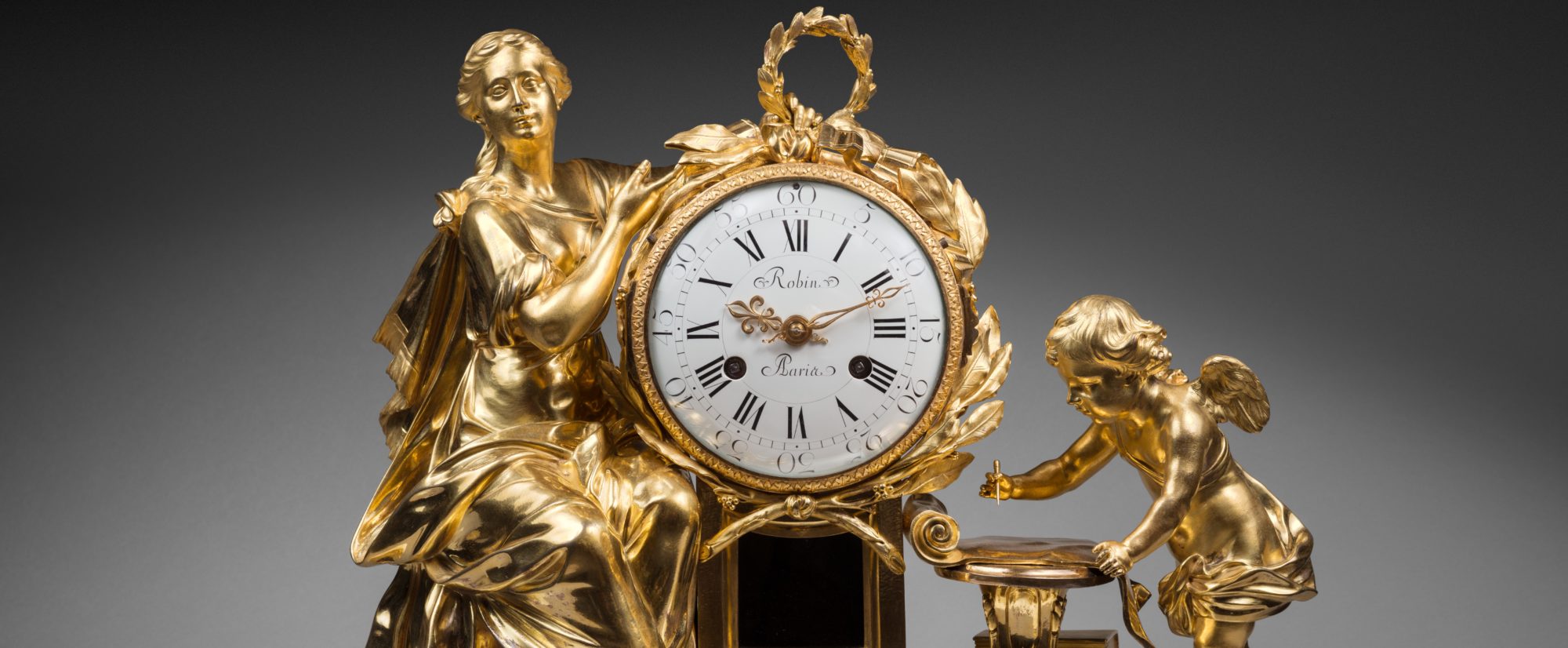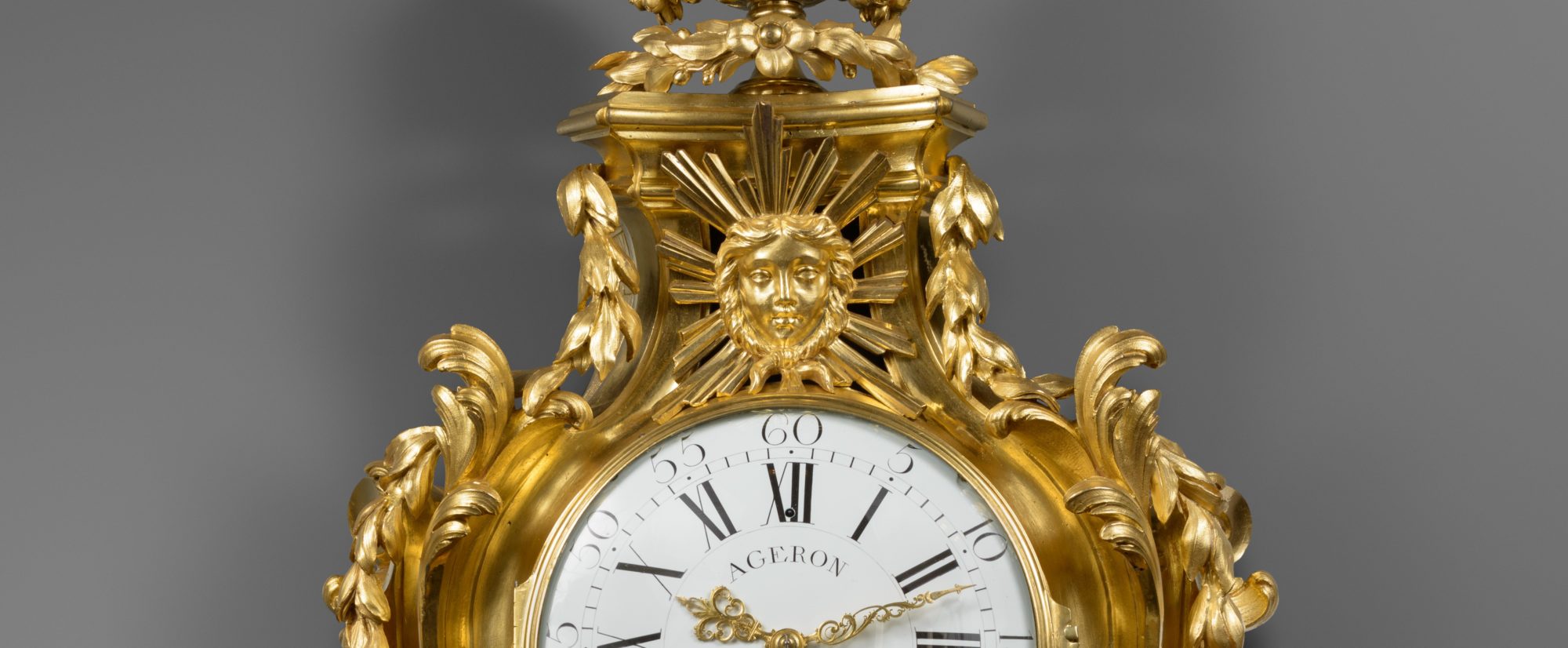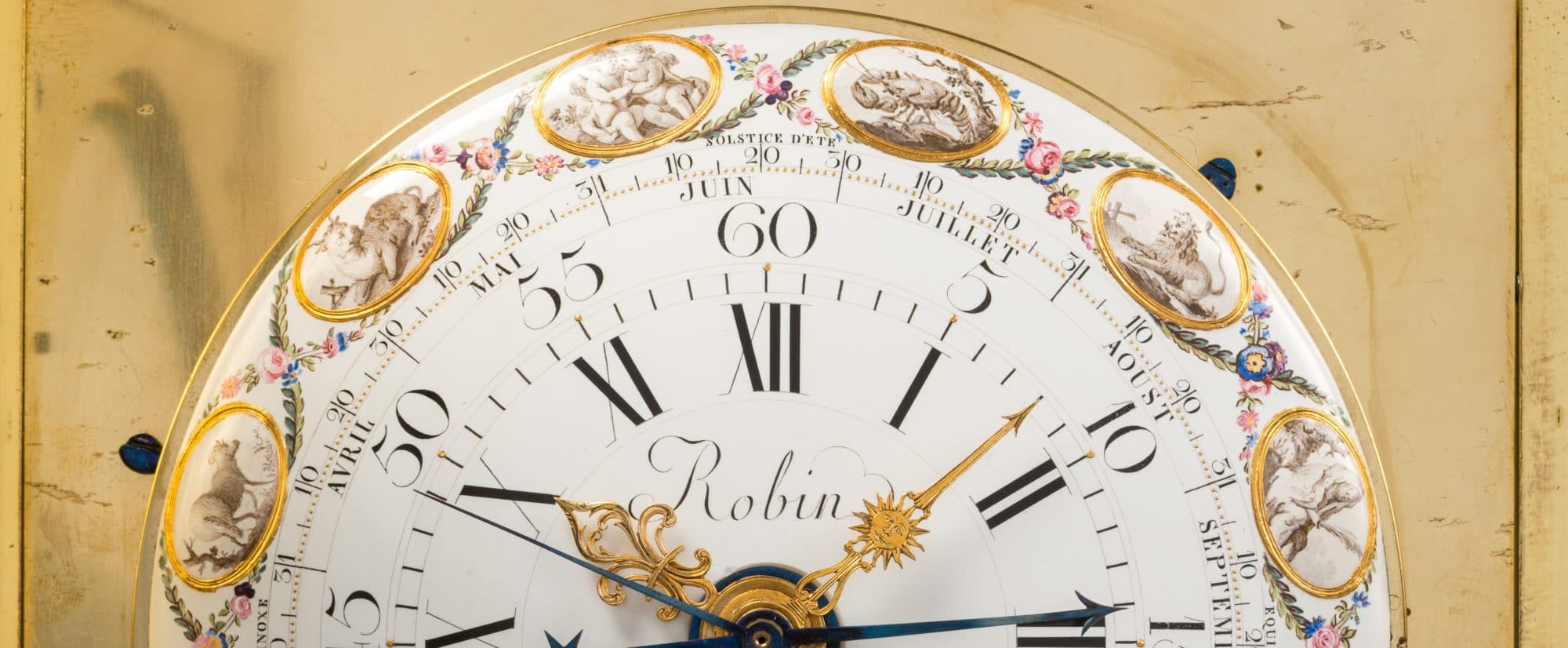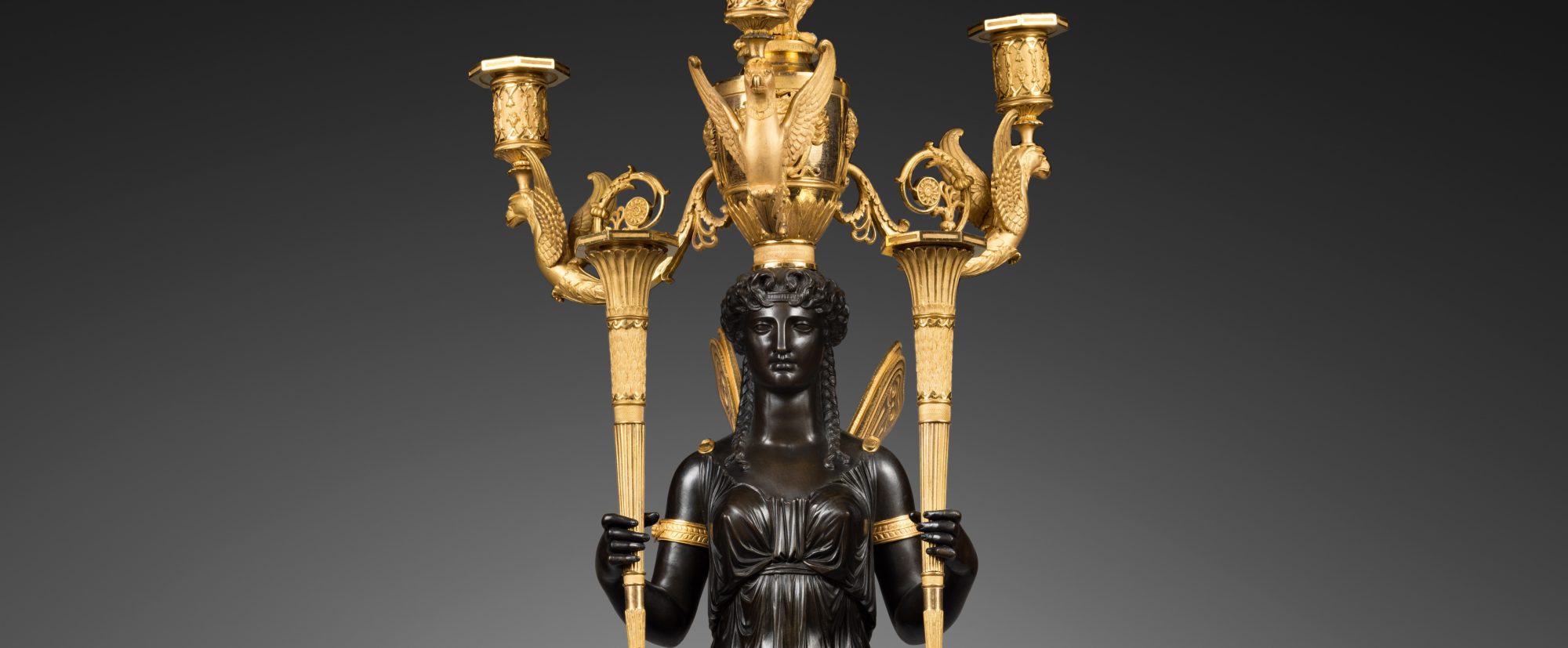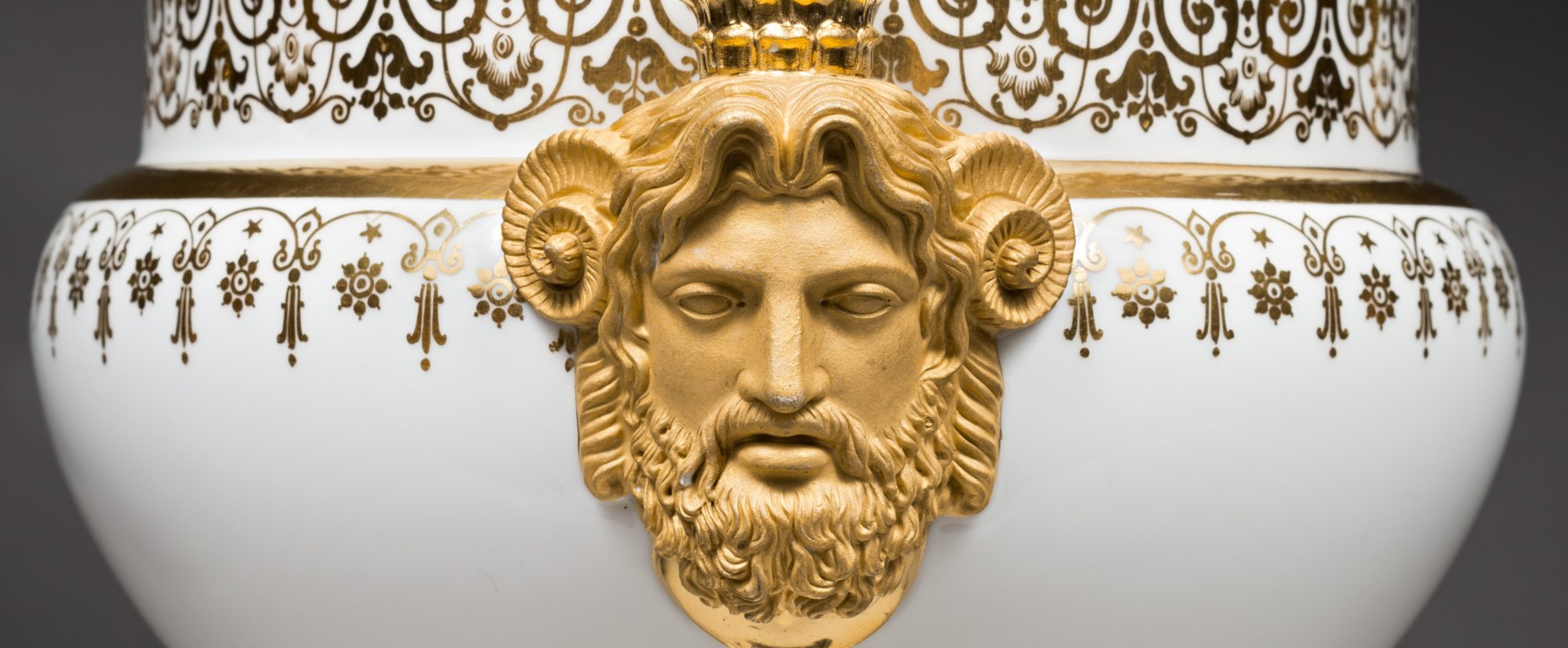Jean-Joseph de Saint-Germain
Bronze-caster
Jean-Joseph de Saint-Germain was probably the most renowned Parisian bronze-caster of the mid 18th century. Active as of 1742, he became a master craftsman in July 1748. He was famous for his many clock and cartel cases, such as “Diana the Huntress” (an example is in the Louvre Museum), the clock supported by two Chinamen (a similar example is in the Musée des Arts décoratifs in Lyon), and several clocks based on animal themes, including elephant and rhinoceros clocks (an example in the Louvre Museum). In the early 1760’s he played an important role in the revival of the French decorative arts and the development of the neoclassical style, an important example of which may be seen in his Genius of Denmark clock, made for Frederic V and based on a model by Augustin Pajou (1765, in the Amalienborg Palace, Copenhagen). Saint-Germain also made several clocks inspired by the theme of Learning, or Study, based on a model by Louis-Félix de La Rue (examples in the Louvre Museum, the Gulbenkian Foundation, Lisbon, and the Metropolitan Museum in New York).
He collaborated on clocks with renowned clockmakers such as Jean-Baptiste III Albert Baillon, François Viger, Gille l’Aîné and the Le Roy, and with enamellers Antoine-Nicolas Martinière and Elie Barbezat.
Along with his clock cases, Saint-Germain also made bronze furniture mounts, such as fire dogs, wall lights, and candelabra. His entire body of work bears witness to his remarkable skills as a chaser and bronze caster, as well as to his extraordinary creativity. He retired in 1776.
Discover our entire collection of rare clocks on La Pendulerie Paris.
